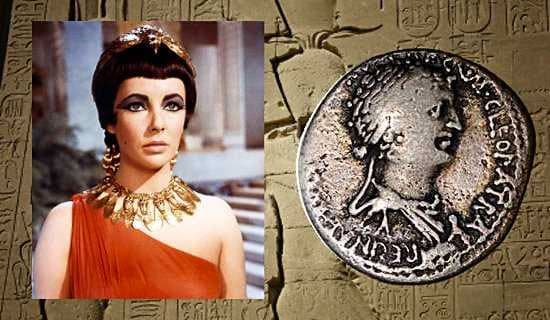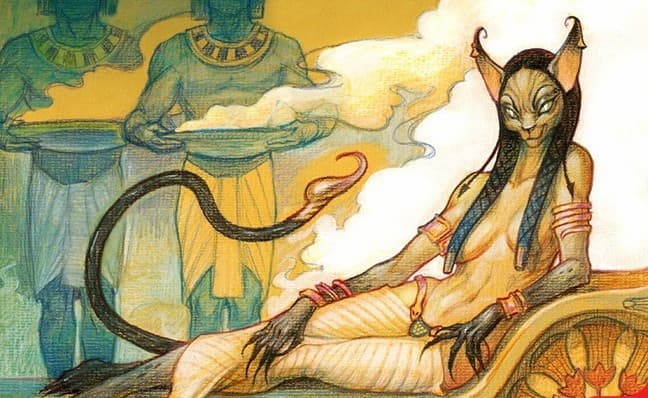Ancient Egypt has always held countless mysterious stories and legends that scientists and archaeologists still seek to uncover. Among the myths surrounding this civilization are many tales that have been widely circulated but are completely inaccurate about Ancient Egypt.
13 Mysteries of Ancient Egypt

- The Beauty of Queen Cleopatra
- Obsessed with Death
- Aliens
- Fully Explored
- Hieroglyphics
- Decorations Inside the Pyramids
- Pharaohs Killing Servants
- Slaves Built the Pyramids
- The Curse of the Pharaohs
- Worshiping Cats
- Skincare with Gold
- The Spiritual World of Duat
- The Sea Peoples
1. The Beauty of Queen Cleopatra
Cleopatra VII, the last Pharaoh of Ancient Egypt, has long been remembered for her legendary beauty—an image reinforced from Shakespeare to Hollywood directors like Joseph L. Mankiewicz.
However, Roman coins depict Cleopatra with masculine features: a large nose, protruding chin, and thin lips—very different from idealized beauty standards.
More importantly, sources suggest Cleopatra was extremely intelligent, which may have been far more significant than her appearance.
2. Obsessed with Death?
The Egyptians were obsessed with life, not death.
It’s easy to assume they were fixated on death because of pyramids, mummies, and gods. In reality, their burial practices were a way to celebrate life.
Tomb illustrations showed farming, hunting, and fishing—scenes of daily joy. Treasures buried with the dead helped them continue their lives in the afterworld.
Mummification was not about death but about preserving life-like bodies, ready to enjoy eternity. Egyptians celebrated life, not death.
3. Aliens
Some believe Ancient Egyptians were in contact with aliens, pointing to the pyramids as “supernatural” feats and murals as depictions of otherworldly beings.
But this view undermines Egyptian achievements. The Great Pyramid of Giza was a masterpiece of mathematics, astronomy, and architecture, remaining the tallest structure for nearly 4,000 years—not because of alien help, but because of unmatched human skill.
4. Fully Explored?
Not at all. Discoveries in Egypt continue even today.
For example, archaeologists recently unearthed a “solar boat” buried near the pyramids. According to mythology, Pharaohs used this boat to assist Ra, the Sun God, in his nightly battle against Apep, the serpent of darkness—emerging victorious at dawn.
5. Hieroglyphics
Contrary to popular belief, Egyptians did not invent hieroglyphics alone—they were likely influenced by early Western invaders.
Another myth is that hieroglyphics were used only for curses and magic. In truth, they were mainly used for records and history.
Until the discovery of the Rosetta Stone in 1798, scholars misunderstood hieroglyphics as symbolic art, not as phonetic writing.
6. Decorations Inside the Pyramids
Hieroglyphs filled tombs and palaces, but pyramids were mostly undecorated.
Until recently, experts believed Giza’s pyramids were bare inside. That changed when hidden hieroglyphs were discovered behind a secret chamber door.
The pyramids were once painted in red and white, but overall their design was simple, emphasizing monumental stone architecture rather than decoration.
7. Pharaohs Killing Servants
It is widely believed Pharaohs buried servants alive with them.
In reality, this happened only in two early dynasties. Later Pharaohs preferred figurines (ushabti) buried in tombs, believed to magically serve them in the afterlife.
8. Slaves Built the Pyramids?
Greek historian Herodotus suggested this, but modern archaeology disproves it.
Workers’ tombs found near Giza show they were honored craftsmen, not slaves. Their diet included beef—luxury food in Ancient Egypt.
Clearly, pyramids were built by skilled Egyptian workers, not enslaved labor.
9. The Curse of the Pharaohs
The so-called curse of Tutankhamun’s tomb is more media myth than fact.
Lord Carnarvon died shortly after the tomb’s discovery, fueling rumors. Some deaths may be linked to toxic mold or gases, but most of the expedition survived—leader Howard Carter lived another 16 years.
The “curse” is more a tale of public fascination than historical truth.
10. Worshiping Cats

Egyptians adored all animals, but cats were sacred, linked to the goddess Bastet.
- Cats’ glowing eyes symbolized moonlight.
- Families mourned cats by shaving their eyebrows.
- Killing a cat—even accidentally—meant death by mob justice, often by being thrown into a pit of snakes.
Egyptians even mummified cats. In 1888, a tomb with 80,000 cat mummies was discovered, a priceless insight into their culture.
11. Skincare with Gold
Egyptians had a beauty secret: gold thread implants under the skin.
Archaeologists found noble mummies with traces of pure gold in their flesh. Tiny gold threads kept skin youthful, elastic, and glowing—a timeless luxury beauty ritual.
12. The Spiritual World of Duat
Duat, described in carvings, was the Egyptian underworld ruled by Osiris, god of life and death.
- Souls had to pass through seven gates guarded by terrifying half-human beasts.
- The heart was weighed against the feather of Ma’at (Truth).
- Pure souls entered Osiris’ kingdom; corrupt ones were devoured by the demon Ammut.
Duat was both a mirror of Earth and a world of strange horrors.
13. The Sea Peoples
The Sea Peoples were mysterious raiders who terrorized the Mediterranean and targeted Egypt.
Records from Ramses II mention them—sometimes as allies of the Hittites, other times as mercenaries. Their true origins remain one of Egypt’s great enigmas.
📌 Conclusion:
Ancient Egypt’s mysteries continue to capture the imagination. Behind the myths and legends lies a civilization of extraordinary knowledge, power, and spirituality—whose secrets we are still uncovering today.

